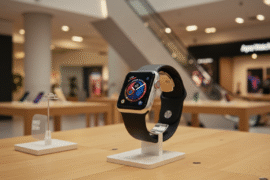As you navigate through the clutter of your home and the complexities of life, you may find yourself questioning what truly matters. Perhaps you’ve heard of the Swedish concept of döstädning, or death cleaning, and felt a mix of curiosity and apprehension. This practice, rooted in the belief that we should clear our possessions to consider those we leave behind, is gaining traction as a meaningful approach to decluttering one’s life. We’ll discover how embracing this trend can not only simplify your space but also bring clarity and purpose to your life. By delving into the principles of döstädning, you’ll learn to view your belongings through a new lens, fostering both emotional and physical well-being. So, let’s take a thoughtful journey together into the world of Swedish death cleaning and explore how this mindful practice can transform your relationship with your possessions and, ultimately, your legacy.
Understanding the Concept of Death Cleaning and Its Importance
Death cleaning, a practice rooted in Swedish culture, is about more than just tidying up; it’s a profound process of letting go and preparing for the inevitable. It encourages you to confront your possessions and make intentional decisions about what to keep, donate, or discard. This approach not only declutters your living space but also alleviates the emotional burden on loved ones when you pass. Think of it as a way to share your life story through the items you choose to keep and pass on, ensuring that those you leave behind are not overwhelmed by the task of sifting through your belongings. Here are a few key points to consider:
- Reflection: It provides an opportunity to reflect on your life and what truly matters.
- Connection: By choosing what to share, you foster meaningful connections with the recipients.
- Relief: It lightens the load for your loved ones, allowing them to cherish memories rather than manage an overwhelming estate.
Incorporating this practice into your life can lead to greater clarity and peace of mind. Consider taking it one room at a time, setting realistic goals, and even involving family members to share the experience. You might find joy in the process as you rediscover items that no longer serve you but hold great stories from your past. Letting go is a liberating journey that can shift your viewpoint on life and legacy.
Assessing Your Belongings and Letting Go of the Unnecessary
As you begin this journey of decluttering, start by assessing each item you own. Go room by room and ask yourself a few pivotal questions:
- Do I use it? If you haven’t touched it in the last year, it might be time to say goodbye.
- Does it bring me joy? If an item feels more like a burden than a delight, consider letting it go.
- Can someone else benefit from it? Items you no longer need may be treasures for someone else.
Next, create a system to streamline your decisions. Use a simple table format like this one to categorize your belongings:
This approach not only clarifies your intentions but also helps you visualize what you truly value. By embracing this method of mindful consideration, you create physical and emotional space, enabling you to enjoy a life that reflects your current self.
Creating a Plan to Navigate Your Treasures
When it comes to sorting through your belongings, having a well-structured plan can make all the difference. Take a moment to reflect on the items that truly matter to you. Ask yourself the following questions:
- What brings you joy? Identify possessions that hold sentimental value or spark happiness.
- What do you use? Consider items you engage with regularly—these are essential to keep.
- What can you let go of? Be honest about items that no longer serve a purpose in your life.
Once you’ve gained clarity, create a timeline to tackle your items. Designate specific days or weekends for each category, such as clothing, books, or memorabilia. Not only will this make the task less overwhelming, but it also provides a structured approach to your decluttering journey. You might find it helpful to use a simple chart to visualize your progress:
This process is not just about decluttering; it is an opportunity to intentionally curate the space around you, making it more harmonious and reflective of your current self. Embrace this journey and take pride in the treasures you choose to cherish.
Engaging Loved Ones in the Process for Emotional Support
Inviting your loved ones into the journey of Swedish death cleaning can transform a daunting task into a shared experience that fosters connection and emotional support. As you begin to sort through belongings and reflect on memories, consider discussing your process with family members or close friends. This not only helps in decision-making but also provides an opportunity for meaningful conversations about your values and what matters most to you.
Here are some ways you can engage your loved ones:
- Share your intentions: Explain why you feel the need to declutter and simplify your life. This openness can help them understand your motivations.
- Involve them in the process: Invite them to help sort through items, which can lead to nostalgia and shared stories.
- Host a “memory session”: Set aside time to reminisce over cherished items, allowing everyone to share their feelings and express their attachments.
- Make it a celebration: Consider a gathering where you can showcase items to share within the family, turning a potentially somber task into a positive experience.
Additionally, creating a simple chart to track what items you wish to keep, donate, or discard can help streamline the decision-making process:
Embracing this process together can deepen your relationships, allowing loved ones to support you emotionally while they confront their feelings about attachment and loss.
Finding Joy and Clarity Through Swedish Death Cleaning
Engaging in Swedish death cleaning provides a refreshing perspective on how you approach your belongings. The process encourages you to consider what truly brings you joy and serves a purpose in your life. As you sift through your possessions, you may find yourself reflecting on the memories and experiences tied to each item, which often leads to powerful realizations about what truly matters. This thoughtful curation can help you achieve a clearer mind, allowing you to adopt a lifestyle filled with intention rather than excess.
Here are some enlightening steps you can take during this process:
- Assess Your Belongings: Start with one room or category to avoid feeling overwhelmed.
- Keep What Sparks Joy: Only hold onto items that bring you joy or add value to your life.
- Share Memories: Gift meaningful items to loved ones, allowing you to share stories and foster connections.
- Let Go of the Rest: Donate or sell items that no longer serve you, creating space for new experiences.
This journey doesn’t just declutter your physical space; it cultivates mental clarity and enhances your appreciation for what you possess. By understanding the importance of each item, you can create a habitat that reflects your values and ensures that you are surrounded by things that truly resonate with you.
Embracing Minimalism for a More Peaceful Future
Adopting the principles of Swedish death cleaning can serve as a transformative experience that not only reduces physical clutter but also fosters a sense of mental clarity and peace. As you start to sift through the belongings that have accumulated over the years, focus on the things that truly matter to you. Consider asking yourself these questions:
- Does this item bring me joy?
- Will someone else benefit from this once I’m gone?
- Does this item have notable sentimental value?
By intentionally decluttering your space, you’re also lightening your emotional load. Creating a more streamlined environment can lead to a clearer mind, allowing you to focus on your goals and priorities. A practical approach to this journey might involve creating a simple table to categorize your items:
Each decision you make not only simplifies your living space but also clarifies your values and priorities for the future. Embracing this mindset can lead to a more peaceful existence, free from the burden of unnecessary possessions.
Final Thoughts
Swedish death cleaning is more than just a method of decluttering—it’s an opportunity to reevaluate your relationship with your possessions and your legacy. By embracing this practice, you not only simplify your space but also create emotional and mental clarity. Whether you’re reflecting on your life, connecting with loved ones, or making decisions about the things you value, death cleaning allows you to approach your belongings with mindfulness and intention.
The beauty of this practice lies in its ability to help you let go of what no longer serves you while honoring the memories and items that bring joy and meaning. As you sort through your possessions, consider the profound impact it can have on your well-being and the peace of mind it can offer your loved ones in the future. It’s not just about removing physical clutter—it’s about cultivating a life that aligns with your values, a life free from excess, and one that focuses on what truly matters.
By adopting the principles of Swedish death cleaning, you set the stage for a future that’s organized, intentional, and full of purpose. Take a step back, assess your belongings, and begin this transformative journey. The process may be challenging at times, but the rewards—a lighter, more fulfilling life—are well worth the effort.
In the end, Swedish death cleaning is a powerful reminder that less can be more, and that the things we choose to keep, share, and let go of shape the legacy we leave behind.
Frequently Asked Questions
What is Swedish death cleaning?
Swedish death cleaning, or döstädning, is a decluttering process that encourages individuals to organize their belongings in a way that is mindful of their loved ones. The idea is to simplify your life and ease the burden on family and friends by sorting through your possessions and deciding what to keep, what to donate, and what to discard.
Why should I consider the concept of Swedish death cleaning?
Embracing this trend can alleviate stress for both you and your loved ones. It allows you to reflect on your life, make intentional decisions about your belongings, and ultimately create a more organized and peaceful living environment. It’s about respecting those you leave behind and ensuring they aren’t faced with the overwhelming task of sorting through your items after you’re gone.
How do I start the process?
Begin by assessing your belongings room by room. Take your time and work at your own pace, asking yourself important questions like, ‘Does this item bring me joy? ‘ Is this something I truly need? Could someone else benefit from it? By creating a realistic plan and involving loved ones, you can navigate this process with clarity and ease.














































